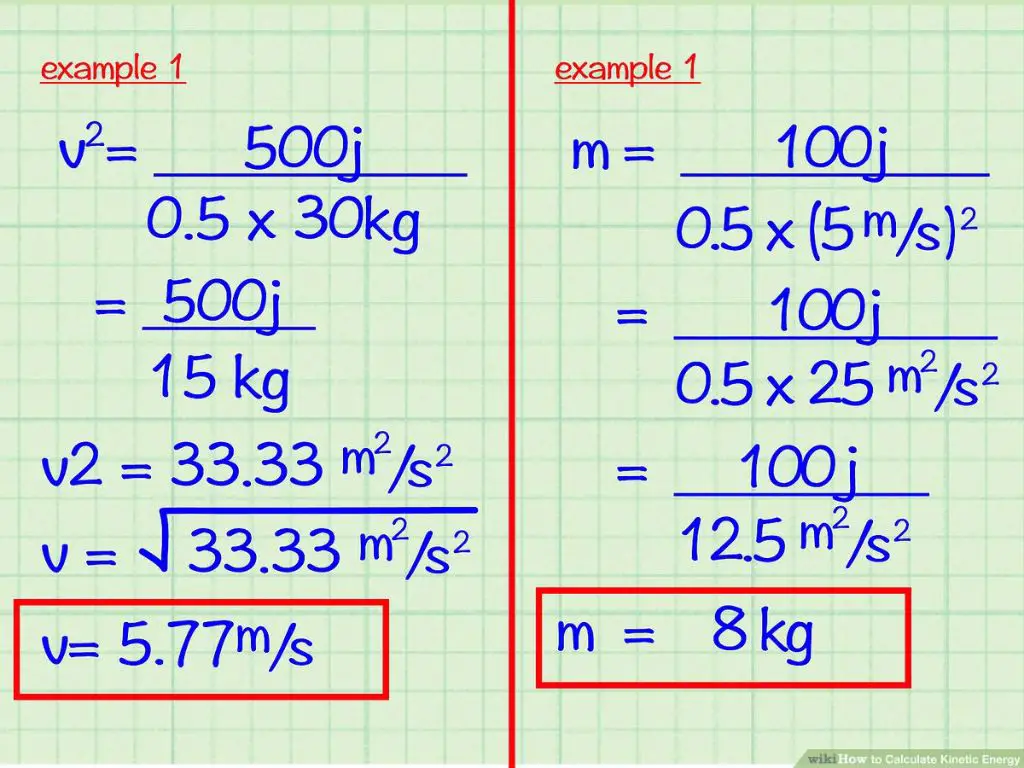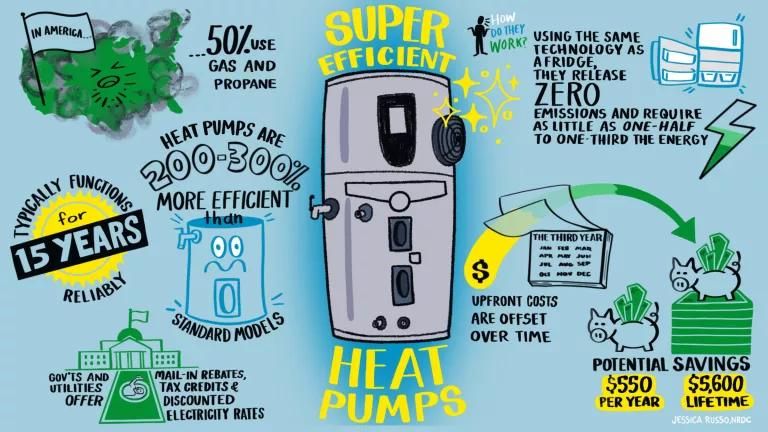How To Find Kinetic Energy?
Definition of Kinetic Energy

Kinetic energy refers to the energy an object possesses due to its motion. It is defined as the work needed to accelerate a body of a given mass from rest to its stated velocity (Britannica, 2022). Kinetic energy depends not only on the motion of an object or particle but also on its mass. The kinetic energy of an object is proportional to the mass of the object and the square of its velocity (Khan Academy, 2022).
The kinetic energy (KE) of an object is equal to one half times the object’s mass (m) times the square of its velocity (v):
KE = 1⁄2 mv2
Calculating Kinetic Energy
The formula for calculating kinetic energy is:
KE = 1/2mv2
Where:
- KE is kinetic energy in joules (J)
- m is mass in kilograms (kg)
- v is velocity in meters per second (m/s)
This formula shows that kinetic energy depends on two variables: mass and velocity. Kinetic energy increases proportionally to mass but increases exponentially relative to the square of velocity. This means that even small increases in velocity lead to large increases in kinetic energy.
To calculate kinetic energy using this equation, simply plug in values for mass and velocity. For example, a 2 kg object moving at 3 m/s would have the following kinetic energy:
KE = 0.5 x 2 x (3)2
KE = 0.5 x 2 x 9
KE = 9 J
The kinetic energy formula is derived from Newtonian physics relating the energy of an object to its motion. For more information on the derivation of the formula, see the online physics resource at [Insert URL 1]
Kinetic Energy Units
Kinetic energy is measured in joules (J) in the SI (International System of Units) system. The joule is defined as the amount of work done when a force of 1 newton acts over a distance of 1 meter. Some other units that kinetic energy can be measured in include:
- Foot-pound (ft-lb) – This is the English unit for kinetic energy, equal to 1.3558 J.
- Electron-volt (eV) – Used in atomic physics, equal to 1.60218e-19 J.
- Calorie (cal) – Used in nutrition, equal to 4.184 J.
- Therm (th) – Used in natural gas utility billing, equal to 105.5 MJ.
Kinetic energy is a scalar quantity, meaning it does not have a direction associated with it. When calculating kinetic energy from velocity, the mass units must be in kilograms (kg) and velocity in meters per second (m/s) to get a kinetic energy value in joules.
Some typical values for kinetic energy include:
- 1 J – Kinetic energy of a 100 g apple falling 1 m
- 4.2 J – Muzzle energy of an airsoft pellet
- 17 J – Energy of a baseball thrown at 40 mph
- 70,000 J – Kinetic energy of a 1,800 kg car traveling at 30 m/s
Kinetic Energy Examples
Kinetic energy is the energy an object possesses due to its motion. Some common examples of kinetic energy in everyday life include:
Moving vehicles like cars, trucks, and buses have kinetic energy due to their motion on the road. The faster a vehicle moves, the more kinetic energy it has.
Flowing liquids like water in a river or stream have kinetic energy due to the movement of the water molecules. As the water flows faster, its kinetic energy increases.
Airplanes in flight have a large amount of kinetic energy because of their high speeds. The kinetic energy of an airplane comes from the thrust of its engines as it propels itself through the air.
According to the sources, “Examples of kinetic energy include walking, falling, flying, and throwing” (https://sciencenotes.org/what-is-kinetic-energy-kinetic-energy-examples/). These motions that involve movement all demonstrate kinetic energy in action.
Relation to Potential Energy
Kinetic and potential energy are complementary forms of mechanical energy. Kinetic energy is energy associated with motion, while potential energy is stored energy based on an object’s position or configuration. The principle of conservation of mechanical energy states that the total mechanical energy in a closed system remains constant. This means that potential energy can be converted into kinetic energy and vice versa.
For example, a roller coaster at the top of a hill has primarily potential energy. As it descends, this potential energy is converted into kinetic energy, resulting in high speeds. The kinetic energy is then partially converted back into potential energy as the coaster travels up the next hill. This back and forth between potential and kinetic energy explains why roller coasters can seem to keep going indefinitely.
Understanding the interplay between potential and kinetic energy is key for analyzing mechanical systems across many fields, from physics to engineering. The ability to quantitatively calculate both forms of energy provides valuable insight into system dynamics.
Conservation of Mechanical Energy
The principle of the conservation of mechanical energy states that the total mechanical energy in a closed system remains constant. This means that the sum of kinetic and potential energy in the system does not change, even as energy transforms between different types or transfers between objects.
The law of conservation of mechanical energy is expressed mathematically as:
Kinetic Energy + Potential Energy = Constant
Or:
KE + PE = Constant
Where KE is kinetic energy and PE is potential energy. This equation implies that the total mechanical energy in a closed system is conserved. Energy can transform between KE and PE, but the total amount of mechanical energy stays the same.
For example, when a ball rolls down a ramp, its potential energy decreases while its kinetic energy increases. However, the total mechanical energy (PE + KE) remains unchanged. The law of conservation of mechanical energy is an important concept in physics and engineering with many real-world applications (source).
Kinetic Energy in Collisions
Kinetic energy can be transferred, dissipated or conserved when objects collide depending on the type of collision.
In an elastic collision, kinetic energy is conserved. This means the total kinetic energy of the system before and after the collision is the same. An example is two billiard balls colliding on a frictionless surface. The kinetic energy before collision equals the kinetic energy after collision.
In an inelastic collision, kinetic energy is not conserved. Some of the initial kinetic energy is converted into other forms like heat, sound and deformation. There is a loss of kinetic energy in the system. For example, when two balls of putty collide and stick together.
The amount of kinetic energy lost in an inelastic collision depends on how inelastic the collision is. A perfectly inelastic collision is one where the objects stick together after collision, with maximum kinetic energy loss. A perfectly elastic collision is one where kinetic energy is fully conserved (citation: https://www.khanacademy.org/science/physics/linear-momentum/elastic-and-inelastic-collisions/a/what-are-elastic-and-inelastic-collisions).
While kinetic energy changes during a collision, total momentum is always conserved in any collision as long as no external forces act on the system.
Real-World Applications
Kinetic energy has many practical applications in the real world, particularly in engineering, physics, and sports science. Some examples include:
In engineering, kinetic energy is harnessed to perform useful work. For instance, hydropower plants utilize the kinetic energy of falling water to turn turbines and generate electricity (https://byjus.com/question-answer/how-do-we-use-kinetic-energy-in-everyday-life/). Kinetic energy enables almost all transportation methods we use daily from walking and cycling to driving cars, flying airplanes, and space exploration.
In physics, kinetic energy is a key concept for understanding collisions, explosions, and other interactions between moving objects. The damage caused by a bullet or meteor hitting something depends on its kinetic energy.
Sports scientists study kinetic energy to analyze athletic performance. The ability to generate high kinetic energy allows sprinters to run fast and long jumpers to leap long distances (https://studiousguy.com/examples-of-kinetic-energy-in-everyday-life/). Understanding kinetic energy helps engineers design sporting equipment like golf clubs and tennis rackets.
By applying principles of kinetic energy, engineers, physicists, and scientists can solve problems, create innovations, and push boundaries in their respective fields.
Classroom Demonstrations
Teachers can set up easy and engaging kinetic energy demonstrations right in the classroom to help students understand the concepts. Here are some popular options:
Rolling balls down ramps is a classic demo. Use ramps set at different angles and have students time how long it takes a ball to reach the bottom. The steeper the ramp, the faster the ball rolls, demonstrating that the ball gains more kinetic energy. See this Exploratorium activity for details: Rolling Down a Ramp.
Pendulums also clearly show kinetic energy conversions. Have students observe how a pendulum exchanges energy between kinetic energy at the low points, and gravitational potential energy at the high points. Let them experiment with different weights, lengths, and release angles. Get ideas from Science Buddies.
Collisions are very visual kinetic energy demos. Try bouncing different types of balls to compare elastic and inelastic collisions. Or roll carts with velcro or magnets into each other. Students can observe kinetic energy transfers during the impacts. See more collision demos at Science Buddies.
Practice Problems
Working through sample kinetic energy calculations is the best way to gain proficiency in this concept. Let’s go through some example kinetic energy problems:
According to Kinetic Energy Practice Problems, here is a sample kinetic energy calculation:
What is the Kinetic Energy of a 150 kg object that is moving with a speed of 15 m/s?
KE = 1⁄2 mv2
KE = ?
m = 150kg
v = 15m/s
Plugging this into the kinetic energy formula:
KE = (1/2)(150 kg)(15 m/s)2
= 16875 J
So the kinetic energy of the 150 kg object moving at 15 m/s is 16875 J.
Let’s look at another example from Kinetic Energy Practice Problems:
An object with mass 5 kg is moving with a velocity of 4 m/s. What is its kinetic energy?
KE = 1⁄2 mv2
= 1⁄2 (5 kg)(4 m/s)2
= 40 J
Therefore, the kinetic energy is 40 J.






